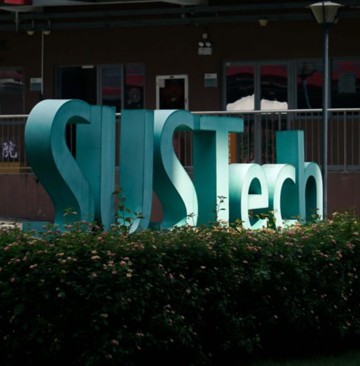Reduced springtime rainfall in southern China linked to human activity
Human activities produce large amounts of atmospheric pollutants, which can also have complex impacts on climate. A team of researchers from Southern University of Science and Technology (SUSTech) has found that human activity may have significantly reduced the amount of springtime rainfall over Southern China since the 1980s.
On February 29, Professor Tzung-May Fu‘s research group from the School of Environmental Science and Engineering (ESE) at SUSTech published a paper in the high-impact academic journal, Geophysical Research Letters (IF = 4.58), a leader in Earth sciences. It was published under the title, “Anthropogenic Aerosols Significantly Reduce Mesoscale Convective System Occurrences and Precipitation over Southern China in April.”
Since the 1980s, aerosols emitted by human activities into the atmosphere in China have doubled. Aerosols can affect precipitation and climate, both directly by scattering solar radiation and indirectly by changing cloud microphysics. However, due to the complexity of convective systems (weather systems where heavy rainfall comes about due to the vigorous upward motion of warm air), the impact of aerosols on convective systems and convective precipitation has been an important unresolved scientific question in climate research.
Mesoscale convection systems (MCSs) cause severe weather such as heavy rain, hail, and strong wind, all of which can be very damaging to people’s safety and livelihood. Observations indicated that late spring precipitation in South China had decreased significantly since the 1980s, with 90% of that precipitation coming from MCSs.
Professor Tzung-May Fu ‘s research group put forward a hypothesis based on the significant increase in aerosol emissions in China in recent decades. The increased aerosol emissions may have caused changes in springtime MCSs over Southern China, which led to the reduced rainfall.
The research team compared the rainfall records in South China during the relatively cleaner period of 1979 to 1989 with those during the relatively polluted period of 2001 to 2011. They found that rainfall in South China had decreased by 25% in April between the two periods, which was mainly manifested by decreased occurrences of heavy rain (Figure 1a). The team applied the meteorology-chemistry model, WRF-Chem, to carry out experiments and developed an objective diagnostic algorithm for MCSs. They found that the large increase in aerosol emissions since the 1980s led to the simulated occurrences of MCS to decline by 21% to 32% (Figure 1b).
Figure 1. Simulated April precipitation in South China: (a) Probability distribution of precipitation intensity; (b) Hours of occurrences of mesoscale convective system (MCS).
Through further simulations, the team was able to elucidate the mechanism by which aerosols reduced MCSs in South China (Figure 2). The increased aerosol in the regional atmosphere enhanced the scattering of short-wave radiation from the sun. At the same time, more aerosols formed more liquid cloud droplets, which increased the amount of solar radiation reflected by clouds. Both mechanisms reduced solar radiation reaching the surface, making the surface cooler and more stable. Ultimately, this suppressed the occurrence of MCS, thereby reducing regional rainfall.
This paper is pivotal in pointing out that aerosols affect MCSs not only directly, but also indirectly by altering the interactions between MCSs and the ambient atmosphere. These findings help advance the scientific understanding of the impacts of aerosol on precipitation and climate.
Figure 2. Schematic diagram of the effect of carbon emissions on the April mesoscale convective system in South China
Zhang Lijuan, a doctoral student at Peking University and a visiting student of SUSTech, is the first author; Professor Tzung-May Fu is the corresponding author. The study was financially supported by the National Natural Science Foundation of China (NSFC).
Article link: https://agupubs.onlinelibrary.wiley.com/doi/abs/10.1029/2019GL086204
